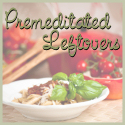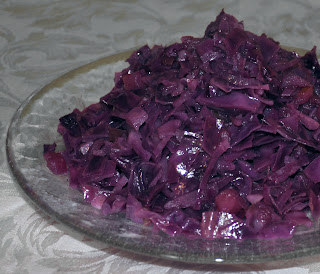Friday, 30 December 2011
2nd Hand Pledge
I'm not a New Year's resolution kind of girl. I figure that doing the best I can every day is a lot better than setting unrealistic goals at the beginning of the year, knowing that I'm likely to fail. Still, at the end of December it's pretty hard to avoid discussing resolutions. There are blogs, newspaper articles, and magazine stories about them everywhere you look.
Surprisingly, one suggested resolution has really stayed in my mind this year. I've seen a number of blogs about people taking a "Second Hand Pledge." Many are couched in ostentatious language about higher principles (the kind of snootiness that usually turns me away before I finish the second sentence) but I do like the underlying idea. It fits very well with what I'm trying to accomplish on a day to day basis.
Buying from thrift stores, garage sales, estate sales, and using free cycle exchanges are wonderful ways to stretch a budget. They usually have an added benefit or two; often helping charities carry on their work and almost always being kinder to the planet. All good things in my eyes.
I've decided that this year I'll make my own second hand pledge, not as a New Year's resolution but because the idea makes sense to me.
Starting on January 1 and for all of 2012, we will buy no new clothes (other than undergarments or items required for work but unavailable second-hand), no new household items or furnishings, and no new books. When we look for other items, we'll look first to second hand, to up-cycling or recycling, or to bartering before we consider purchasing something new.
I'm excited about this! Just think of the money we'll save!
_______________________________
image source: hielsa.com
Thursday, 29 December 2011
Baked Pear With An Oatmeal And Maple Cookie Crust
We received some pears in our Good Food Box this month and, since I had also recently received a gift of maple syrup from a friend, I decided to put the two ingredients together. I often bake apples with an oatmeal streusel topping so I decided to do the same thing with the pears. I wanted to make my usual streusel recipe, but to make it with maple syrup instead.
I initially named described the dish as baked pears with an oatmeal, maple syrup, and cinnamon streusel but, the more I thought about it, the more it seemed to me that the description was inaccurate. True, I did make the topping using the proportions I use for all of my oatmeal streusels, but a streusel is a crumble topping and the topping on these pears is not. When I substituted maple syrup for the brown sugar I usually use, it changed the streusel into a batter and, when the batter was baked, it formed a cookie crust on top of the fruit.
I initially named described the dish as baked pears with an oatmeal, maple syrup, and cinnamon streusel but, the more I thought about it, the more it seemed to me that the description was inaccurate. True, I did make the topping using the proportions I use for all of my oatmeal streusels, but a streusel is a crumble topping and the topping on these pears is not. When I substituted maple syrup for the brown sugar I usually use, it changed the streusel into a batter and, when the batter was baked, it formed a cookie crust on top of the fruit.
No matter. Whatever you call it, it still tastes good.
I used one pear to make dessert for the two of us. If you want to make more servings, just increase the ingredients proportionately.
To make a Baked Pear With Oatmeal Maple Cookie Crust, you’ll need:
- 1 pear
- 1/4 cup oatmeal
- 1/4 cup all purpose flour
- 1/4 teaspoon cinnamon
- 2 Tablespoons cold butter, cut into slices
- 1/4 cup maple syrup
Mix the oatmeal, flour, and cinnamon together. Use your fingers to work the butter into the flour mixture until it breaks down into small flakes. The resulting mixture should look something like this:
Stir in the maple syrup.
Cut the pear in half and remove the center part where the seeds are, the blossom end at the bottom of the pear, and the stringy bits in the middle. ( I use a small melon scoop to do this. It works very well.) Cut a little slice off of the peel side of each pear half so that they will sit cut side up without wobbling. Place them on a flat pan that has been buttered or lined with parchment paper.
Spread the topping over the two prepared pear halves.
Bake the pear halves at 350ºF for about 30 minutes, until the pear skin can be pierced easily with a fork.
Allow the pear to cool for 5 or 10 minutes before serving. Vanilla yogurt or ice cream would make a nice accompaniment.
Cash Envelopes From Fabric Scraps
I am learning to live on cash. It's a big change for me. I've always figured I'd spend less if I didn't have cash in my hands, and that if I used my bank card I'd at least have a record of where the money evaporated to. I came to realize though that even if I had all those little pieces of paper telling me where I'd spent the money, I wasn't really any closer to managing my budget. Worse, because I wasn't actually handing over bills, it didn't feel like I was spending at all.
Money management has been a hard-earned skill for me, and I still have moments when I'm really bad at it. I've come to understand though that, rich or poor, we need to know where and how our money is being spent. The less of it we have, the more important this becomes. If $20 can make the difference between groceries or no groceries at the end of the month, you'd damned well better know where to find it!
So, after lots of reading and thinking and discussion, I decided to switch to a cash only budget for my variable expenses. Fixed expenses are still paid through the bank but stuff like clothing and food are paid in cash. If there's no cash left, then no shopping gets done.
There are two key components to our cash only system. The first is setting aside a set amount for each portion of our budget—food, clothing and gifts, entertainment (including crafts), transportation, household supplies, medication—in labeled envelopes. The second is writing down what we've spent in a budget book, as soon as we've spent it. We keep receipts in envelopes in the budget book and we file those envelopes and each month's receipts away at the end of the month in a labeled 9x12 envelope. The system has helped me to know where we're doing okay and what needs work. It's very helpful if I need to find a receipt and it's a blessing at tax time.
At first I re-used envelopes that I received in the mail for all of this cash management. I simply wrote what they were for on the outside and put them to work. I still re-use envelopes for filing receipts in my budget book, but I found that they often didn't last the month when used for our cash. Then I put the money in jars but my husband doesn't care for that system. His hands are too big to just reach in and pull the money from the jars, so he has to pour the money out onto the counter and then return it to the jar once he's taken what he needs.
I've been looking for some sort of re-useable money holder so I was very pleased to see this post by $5 Dinners. I have quite a bit of fabric in my scrap bin so I'm going to make some of these fabric envelopes this weekend. I thought you might like to know how to make them too. Here's the link: http://www.5dollardinners.com/2011/12/personal-finance-4.html
Happy crafting!
________________________________________________
Photo source: http://www.5dollardinners.com
Tuesday, 27 December 2011
Eggs Baked in Tomatoes
I enjoy baked egg dishes. They’re less fatty than fried eggs and easier to make than poached eggs. My husband enjoys them too, especially if the eggs are cooked in some sort of little cup. I’ve made them in muffin tins lined with toast or with deli meat. Last week, I baked eggs in hollowed out tomatoes.
In many ways, a tomato is a perfect vessel for a baked egg. It’s not fatty or overly salty, as some deli meats can be, and it doesn’t get soggy. The bright acidity of the tomato contrasts nicely with the egg.
I usually cook just one baked egg in tomato for each person but, if you’re serving someone with a larger appetite, you might want to cook more.
There’s really not a recipe for this. You need only tomatoes, eggs, and seasoning.
Begin by cutting the tops off each tomato; kind of like making the lid on a jack-o-lantern. Hollow out the tomatoes. (A grapefruit spoon works well for this.)
Save the insides of the tomatoes for another dish. I added mine to my soup stock.
Salt the insides of the hollowed out tomatoes and then turn them upside down on a piece of paper towel to drain. Leave them for at least an hour.
Once the tomatoes have drained, cut a little piece off of the bottom of each one so that the tomatoes will sit flat, without wobbling.
Put the tomatoes on a flat pan, lined with parchment paper. (This will make your clean up so much easier!) Crack an egg into each tomato. Season the eggs.
I used just some freshly ground black pepper because there’s already salt inside the tomatoes. You can add whatever suits your fancy: hot sauce, herbs…
I used just some freshly ground black pepper because there’s already salt inside the tomatoes. You can add whatever suits your fancy: hot sauce, herbs…
Bake the eggs in a 350˚F oven until they’re set the way you want them. I like the whites to be firm, and the yolks soft. Serve the eggs as soon as you take them from the oven.
_____________________________________
This post is linked to the Hearth & Soul Blog Hop.





What We Ate; December 12 - 25
I missed my menu post last week due to illness, so today I'm posting two week's worth of meals. I'm still working on more recipe links. I'll be adding more during the week. When I do add a new link, I'll post a note on my Facebook page to let people know. In the meantime, this should get us off to a good start. :^)
On the 12th I did a quick total of my grocery expenditures for the month and realized that I was running over budget. Looking back on what we'd eaten I realized that there were several reasons for the over-run: I'd used quite a few fresh tomatoes despite the fact that they're not in season, dairy prices have gone up yet again, we'd treated ourselves to both a steak dinner and a rotisserie chicken, and we'd had company.
Since there was still a lot of month left and no money in the budget, I cut back on yogurt and cheese, and on meat. I also made most of our meals from items I had stored in my freezer and pantry.
I did stray from my plan on Christmas Eve because Jack had been asking for sausage rolls for days. He'd been so good about our very plain, gift free Christmas that I wanted to indulge him with this one small treat.
We revised our Christmas dinner plan, cooking steaks and green beans from the freezer and potatoes and Brussels sprouts from our Good Food Box. It was not what we'd originally planned, but it was delicious.
We are still over budget. You can't un-spend food money, but at least we're not as badly over budget as we might be.
Here's what we ate.
Monday, December 12:
- Breakfast - Oatmeal, mandarin oranges
- Supper - Baked eggs in tomatoes, veggie hash, apple crisp
Tuesday, December 13:
- Breakfast - Coffee cake
- Supper - Fried egg and tomato sandwiches on toasted wholewheat bread, carrot and celery sticks, apples
Wednesday, December 14:
- Breakfast - Applesauce bran muffins (from the freezer), sliced cheddar, mandarin oranges
- Supper - Chili (from the freezer), brown rice, canned peaches
Thursday, December 15:
- Breakfast - Chili (yes, we did like it that much :), wholewheat toast
- Supper - Cabbage, carrot, onion, and bell pepper stir fry with garlic black bean sauce, soba noodles, mandarin oranges
Friday, December 16:
- Breakfast - Oatmeal, canned pears
- Supper - Pot roast, carrots, rutabaga, and potatoes slow cooked with onions, garlic, and rosemary, applesauce for dessert
Saturday, December 17:
- Breakfast - Eggs, toast, apples
- Supper - Pot roast pie, steamed green beans (from the freezer), mandarin oranges
Sunday, December 18:
- Breakfast - Johnny cake, warm applesauce
- Lunch (We had guests so it was our main meal) - Chicken vegetable, and orzo soup, grilled cheese sandwiches, vegetable plate of red and yellow peppers, carrot sticks, radishes, and black olives, chocolate orange cookies.
Monday, December 19:
- Breakfast - Oatmeal, mandarin oranges
- Supper - Cream of celery soup, apple and cheddar muffins (from the freezer) and, for dessert, a baked pear with an oatmeal and maple cookie crust.
Tuesday, December 20:
- Breakfast - Applesauce bran muffins (from the freezer), mandarin oranges
- Supper - Spinach and brown rice pancakes, salad of lettuce, shredded carrot, pickled beets, and garbanzo beans with homemade thousand island dressing, canned peaches
Wednesday, December 21:
- Breakfast - Pineapple and carrot muffins, pears
- Bennys made with the leftover spinach and potato pancakes, salad of shredded carrots and radishes with an herb vinaigrette, apples
Thursday, December 22:
- Breakfast - Apple slices, cheddar cheese, whole wheat toast
- Supper - Boiled ham, baked potatoes, steamed carrots and corn
Friday, December 23:
- Breakfast - eggs, whole wheat toast, mandarin oranges
- Salad of romaine lettuce, onion, and pickled red cabbage, refried beans, baked whole wheat tortilla chips.
Saturday, December 24:
- Breakfast - Oatmeal and applesauce
- Supper - Sausage rolls, coleslaw with cider vinegar dressing, mandarin oranges
Sunday, December 25:
- Breakfast at my brother's house. He cooked and it was really good. :^)
- Supper - Rib steaks, Brussels sprouts in cheese sauce, mashed potatoes, steamed green beans, Snickerdoodles.
Monday, 19 December 2011
Feeling Wealthy
Last month's Good Food Box didn't have as much in it as October's had. It was still good value but harvest season had passed us by and available produce was increasing in price. With that and the holiday season in mind, I ordered three boxes for December. My plan was to share some with a friend in need, to take what we knew we would need, and then--if there was any surplus--to make a basket for the food bank.
This month's Good Food Box brought a surprise. It was amazingly abundant; providing us with 12 different fruits and vegetables. My photo, above, shows the contents of a single box. Our $30.00 bought us 15 pounds of potatoes, 9 pounds of onions, 9 pounds of carrots, 3 heads of garlic, 3 heads of romaine lettuce, 75 Brussels sprouts, 12 mandarin oranges, 9 apples, 9 Anjou pears, 3 bunches of celery, 6 green peppers, and 3 bunches of spinach.
I was elated. We're going to eat very well in the coming month and, even allowing for that, we were able to make up a good sized basket for the food bank.
I feel wealthy with such abundance at my fingertips. It's wonderful to know that our vegetable bins are full and that, with a little planning, the food on hand will carry us well into the coming month. It's better still to be able to pass some of that bounty on to others in need.
What a wonderful start to our week!
Laundry on a Budget
High efficiency detergent is expensive!
I'm sure we can eventually find space in our apartment for a washer and dryer but, aside from the cost of detergent and the inconvenience of trekking up and down stairs and along hallways, there are some merits to our shared laundry. The cost of running and maintaining our laundry equipment is already covered by our monthly strata fees. If we buy my own machines, we'll be responsible for those expenses. Also the laundry room is in the basement of the building so, if there is a leak, the water damage can be contained within a limited space. The same cannot be said of our second floor apartment. Our insurance costs would increase to reflect the greater risk.
For now, we'll make do with the machines downstairs, despite the need for expensive detergent.
If you have a washing machine that doesn't require high efficiency detergent, you may want to try this recipe for homemade laundry detergent. I found it on Pinterest and, even with our higher Canadian prices, it still works out to cost $5.00 or less per gallon. At 1/2 cup per load, that's a pretty good bargain.
It's worth a try, right? Hope it works for you.
____________________________________
Photo: whynotsew.blogspot.com
Tuesday, 13 December 2011
What We Ate; December 5 - 11
I feel like we’ve been living the high life. I was fortunate enough to find a couple of really good specials last week that allowed us to enjoy some treats. Brie and a rib steak all in one week! I love it when that happens!
Here’s what we ate:
Monday:
- Breakfast Johnny Cake and stewed rhubarb
- Supper - Grilled brie and apple sandwiches on Caramelized Onion Bread, coleslaw with cider vinegar dressing, canned pears.
Tuesday:
- Breakfast - Cottage cheese and mandarin oranges
- Supper - Grilled rib steak, Sweet and Sour Red Cabbage, oven fries.
Wednesday:
- Breakfast - Carrot Zucchini Muffins, applesauce
- Supper - Borscht, sandwiches made with sliced, leftover steak and horseradish mustard on toasted caramelized onion bread, parfaits made with yogurt and stewed rhubarb.
Thursday:
- Breakfast - Orange and currant scones , applesauce
- Supper – Mushroom and cheddar omelettes, white bean ragout from the freezer, canned peaches
Friday:
- Breakfast – Oatmeal, mandarin oranges
- Supper – Red beans and rice, lettuce, red onion, and shredded carrot salad with honey mustard vinaigrette, baked apples with Ginger Crinkle Cookie streusel.
Saturday:
- Breakfast – Cheddar Bacon Biscuits, sliced tomatoes
- Supper – Rotisserie chicken, mashed carrots and rutabaga, brown rice, Gingerbread from the freezer, topped with warm applesauce
Sunday:
- Breakfast – Cottage cheese and apple slices
- Supper – Spinach and mushroom salad topped with sliced chicken breast from leftover from Saturday’s rotisserie chicken, homemade ranch dressing, mandarin oranges.
________________________________
Image: Handwritten menu from March 13, 1908
Source: http://gslis.simmons.edu/daisie/items/show/146
Sweet and Sour Red Cabbage
I have to confess that by this time of year I’m a little tired of cabbage. It’s one of the most affordable vegetables in the grocery store so we end up eating a lot of it. I am the queen of coleslaw but, eventually, I just really need a change. That’s certainly how I was feeling when I stood in the produce aisle on Tuesday, but I ended up bringing a cabbage home anyway. I only had a couple of bucks in my pocket and it was, once again, the best value for my money.
I consoled myself by buying a red cabbage. At least it was a little bit different from what we’ve been eating in recent weeks, and I knew that I would find sweet and sour cabbage a change of pace from the other cabbage dishes we’ve been eating.
My sister Alane taught me how to make this dish. She learned it from her German mother-in-law, and I have to say that the recipe’s a keeper. A word of caution though: I’d forgotten how big a quantity this recipe makes. I ended up with a mountain of cooked cabbage. Thank goodness for borscht!
- 1/2 head of red cabbage
- 1/2 a red onion, thinly sliced
- 1 apple, cut into a small dice
- 2 teaspoons of cider vinegar
- 1 teaspoon of sugar
- A pinch of cloves
- 1 Tablespoon of canola oil
Start by coarsely shredding the cabbage and placing it in a bowl. Fill the bowl with cold water and swish the cabbage around a bit to make sure that there are no little bits of soil clinging to it.
Working in a large pot or Dutch oven, heat the canola oil and then use it to sautée the onion until it’s tender. Reduce the heat to medium-low, drain the cabbage in a colander and add it to the pot. Add the rest of the ingredients. Stir to combine.
Continue cooking the cabbage, stirring occasionally, until it’s tender. This can take quite a while—up to an hour. When the cabbage is cooked it should be tender but still have some texture to it, and all of the liquid in the pot should be evaporated.
Johnny Cake
The term Johnny Cake means different things in different places. On the east coast of the US, it refers to a fried cornmeal flatbread or pancake. The same dish known in the southern states as a Hoe Cake. Here—at least in our family—Johnny Cake refers to a baked quick bread, slightly sweetened with sugar and leavened with baking powder. Other than the fact they’re both made from corn, I have no idea at all how (or even if) the two dishes are related.
What I do know about the Johnny Cake that I bake is that, when it’s served hot from the oven topped with stewed fruit (as shown here, with rhubarb) or golden syrup, it makes a delicious breakfast. If the batter is divided and baked as individual muffins, they’re great for dipping in chilies, soups, or stews.
To make Johnny Cake, you’ll need:
- 3/4 cup cornmeal
- 1 cup milk
- 1 egg
- 1/4 cup sugar
- 1/4 cup canola oil
- 1 cup flour (Use whole wheat flour if you want to. I often do.)
- 3-1/2 teaspoons baking powder
- 1 teaspoon salt
Mix together the cornmeal and milk. Beat the egg and stir it in, together with the sugar and the canola oil.
Whisk together the dry ingredients. Add them to the cornmeal mixture and stir just until the ingredients are combined.
Pour the batter into a greased 9 x 9 inch cake pan and bake it at 350ºF for 25 to 30 minutes.
Cut the cake into serving portions as soon as it comes out of the oven.
Serve it piping hot, topped with warm stewed fruit or applesauce, or with butter and syrup.
Thursday, 8 December 2011
I've Got Mail!
My friend Ann Andersen sent me an email today, describing a wonderful dish she'd made. She's kindly consented to let me share the recipe. It sounds wonderful.
Here's Ann's email:
"Beth, I am so excited about a meal I made last night I had to share it with you! The day before, I had put together my favourite combined flavours - crispy bacon, red peppers quartered and roasted in some of the bacon fat; added chopped garlic for 30 seconds; added chopped tomatoes for a few minutes. I had some left over from that meal and thought about the white beans I had frozen earlier on your advice and the fasolada I used to enjoy so much at Bravo's. So I put the leftovers and beans into a pot, added a vegetable cube, a bit of water, chopped carrot, onion, celery, a tub of chopped frozen tomatoes from Ingrid's garden and plenty of dried oregano. It was a delicious taste of Greece - on a budget. I should mention that the celery was also frozen, left over from a veggie tray earlier in the fall...I simmered the whole thing for about 20 - 25 minutes to combine the flavours!"
Thanks, Ann, for taking the time to tell me about this. I can't wait to try it myself.
Tuesday, 6 December 2011
Minding Our Pennies; What We Eat
In the course of researching and writing my blogs I read the work of a lot of other bloggers, and I've noticed that managing a budget is a theme frequently touched upon by food writers. It makes sense, really: In these tough economic times, wages often don't keep pace with inflation and preparing good, nutritious meals becomes an ever greater challenge.
At our house earnings have actually decreased by a fairly drastic amount in recent years. I'm not complaining. Our circumstances certainly aren't dire, and we're much better off than many people in our community. I'm just making an observation. If we're feeling the strain, it's likely that a great many of the people around us are too.
I'm pretty good at making a dollar stretch and, even though our food budget has become smaller at the very same time food prices are increasing, I think we eat pretty well.
Our monthly budget for food (not counting household and personal items) is usually between $100 and $150. Sometimes it's less. Since I've mentioned those numbers in my posts, I've had a number of people question how I manage that and, since I'm proud of how well we eat, I've decided to write about it.
In my reading, I've noted some common themes about managing a food budget. Most of the bloggers I read plan their meals ahead for a fairly long period of time, limiting their shopping trips to once or twice a month. Many are also avid users of coupons. Neither of those strategies work particularly well for me.
I find that if I plan the meals 'way ahead and shop based upon that menu plan, I almost always end up buying too much food. It's a point of pride to me that we waste as little food as possible in this house so, instead of doing long term meal planning, I plan my meals day to day based upon what we have on hand and what's on offer in the weekly grocery flyers.
We purchase two Good Food Boxes each month. We pick them up on the third Monday of each month and their contents help determine what we'll be eating for most of the month that follows. The boxes contain a variety of foods. Some, like potatoes and onions, will keep for quite some time. Others, like spinach and salad greens, have to be used up quickly.
I plan our meals in such a way that we'll use up the most perishable ingredients from the Good Food boxes first. I look at what's left over at the end of one evening's meal and think about how I can combine it with other ingredients in the fridge and pantry to make the next day's food. At least one meal each week is specifically planned to clean up any leftovers remaining in the fridge so we can move forward from a fresh start. Only when we've used up all of the leftovers and all of the most perishable ingredients from the Good Food boxes do I consider buying more produce.
When I do buy produce other than what we receive in our Good Food boxes, I shop for it day by day and I make it a rule to purchase only half of what I think we'll need. I'm a terrible over-estimator and, if I don't curb myself with the "purchase half" rule, we end up with 'way more fruit and vegetables than we can use up in a reasonable period of time.
As to the rest of my shopping, while I do appreciate the savings that coupons offer me on household cleaners, papers, and personal items, they rarely offer savings on the foods that we eat. Most coupons are for processed food and I cook from scratch most of the time. I'm always happy to see coupons for canned tomatoes, frozen vegetables, tuna, baking products, or canned beans but, because Canada does not have the same liberal coupon policies offered by many US grocers, I can usually find the best price simply by scanning the flyers, knowing my prices, and comparison shopping.
We eat less meat than we used to. At least three of our meals each week are vegetarian. Many incorporate either beans or eggs because beans offer the most affordable protein in the grocery store and I my sister-in-law kindly provides most of the eggs we use. (I know. We're very lucky.) When I do buy meat, I buy what's on sale. Even then I stay away from the more expensive cuts. There's a lot of braising and slow cooking going on in my kitchen.
Unless we're expecting guests, lunches at our house almost always consist of leftovers from the previous night's supper. If there aren't enough leftovers to make a meal, we'll have a salad, some cottage cheese and fruit, or good old PB and J.
In addition to our regular grocery budget, we have a budget for planned spending. We set aside $20 to $25 each week towards expenses like a CSA basket, an allotment garden, or bulk buys of fruit and vegetables at harvest time, for canning or freezing. Our planned spending budget year runs from October to October so that we have enough money set aside when it's time to avail ourselves of the peak of the harvest season.
Because I do shop the flyer specials and because I keep a stock of staples on hand at all times, what I spend our grocery money on (other than fresh produce) often has no relation at all to what I'm cooking at that time. It's very important that I keep a running inventory of what's in my pantry and my freezer. Doing so helps me to avoid duplicate purchases, and to avoid running to the store to purchase an ingredient at full price because I'm unexpectedly out of it.
That's pretty much my food strategy in a nutshell.
I'm going to be posting a "week in review" menu feature showing what we eat from week to week. I'll provide links to some of each week's recipes for you too. Once a month I'll give you a breakdown of what I've spent on our meals. I'm hoping that the information will be helpful, or at least interesting, to some of you.
Here's what we ate last week (November 28 to December 4):
Monday:
- Breakfast: Eggs, wholewheat toast, apples
- Dinner: Spinach, red onion, and sweet bell pepper pizza on an olive bread crust. Pear crisp for dessert.
- Breakfast: Eggs, vegetable hash
- Dinner: Salmon loaf, a lettuce, carrot, and red onion salad with plum vinaigrette, baked potatoes, home-canned peaches.
- Breakfast: Cottage cheese, mandarin oranges
- Dinner: Grilled sweet Italian sausages, grilled tomatoes, steamed green beans, rice pudding.
Thursday:
- Breakfast: Applesauce bran muffins, cheddar cheese, cantaloupe
- Dinner: Italian sausage soup and wheat and white biscuits. Baked apples for dessert.
Friday:
- Breakfast: Oatmeal with raisins and apples, yogurt
- Dinner: Night off. I was sick so I didn't eat. Jack had left over soup and a grilled cheese sandwich.
Saturday:
- Breakfast: Apple slices, cheddar cheese, reheated biscuits.
- Dinner: Hummus, flat breads made from olive bread dough, cucumber and red onion salad with a lemon and oregano vinaigrette, mandarin oranges.
- Breakfast: Eggs, grilled tomatoes, wholewheat toast.
- Dinner: Chili bean stuffed potatoes, lettuce and tomato salad with homemade Thousand Island dressing. Gingerbread with lemon sauce for dessert.
Photo: trustssaints.ca
Chili Bean Stuffed Potatoes
Have you ever had one of those days where time just gets away from you? I had a day like that on Sunday. I was so busy visiting with friends that I didn’t even notice that the day was slipping past me, hurrying on its way toward evening. Suddenly it was dinner time and I had nothing prepared, or even planned. Take out was not in the budget so I had to think of something.
I cooked three russet potatoes in the microwave and then set them aside until they were cool enough to handle. While they were cooling, I looked for something to stuff them with. I found an onion, a can of Heinz chili style baked beans, and some shredded mozzarella and edam cheese left over from pizza night.
When the potatoes had cooled enough for me to work with them, I cut them in half and scooped out most of the flesh, leaving a thick-ish layer around the edges so the skins would hold their shapes.
I chopped and sautéed the onion until it was slightly caramelized. Then I mashed the scooped out potato with a fork and added the onion to it. I spooned in most of the beans and some of the cheese and mixed it all together. The mixture seemed a bit dry so I added some of the liquid from the bean can to bind it together.
I spooned the potato/bean mixture back into the hollowed out potatoes, put them on a baking sheet and topped them with more cheese.
I baked the potatoes at 350ºF for 30 minutes and served them as soon as they came out of the oven.
They were tasty and really filling. My husband liked them enough to have the reheated leftover potato for breakfast the next morning.
They were tasty and really filling. My husband liked them enough to have the reheated leftover potato for breakfast the next morning.
Wheat and White Biscuits
Wheat and White Biscuits are a baking powder drop biscuit made with half whole wheat flour and half all purpose flour.
Baking powder drop biscuits are a handy addition to have in your cooking repertoire. They’re quick and easy to make, they taste good, they’re filling, and they’re made from ingredients readily found it most kitchens. They’re a great accompaniment to soups and stews and a wonderful way to stretch a meal when you have unexpected company. Served for breakfast, they make a more substantial accompaniment to eggs than toast.
If you have half an hour to work with, you can whip up a batch of Wheat and White Biscuits. Here’s what you’ll need to make them:
2 cups each wholewheat flour and all purpose flour
2 Tablespoons baking powder
1 teaspoon salt
1/4 cup cold butter
1-1/2 cups of milk
Preheat the oven to 400˚F. Whisk together the flours, baking powder, and salt.
Cut the butter into slices and add the slices to the flour mixture. Rub the butter between your thumb and fingers to break it down into cornflake-sized pieces.
Toss the butter gently to distribute it through the flour.
Once the butter has been incorporated into the dry mixture, make a well in the center of the bowl and add the milk. Stir until the ingredients mix into a sturdy but sticky batter.
Drop large spoonfuls of batter onto a greased cookie sheet.
Bake the biscuits for about 20 minutes. They’ll be lightly browned on the top, browned on the bottoms, and set inside. Serve them hot from the oven.
Italian Sausage Soup
When I cook sausages on the grill, I always simmer them first. Simmering draws off some of the fat, helping to prevent flare ups while the sausages are cooking over the flame. There’s a lot of flavour in that simmering liquid so I save it. I also take care to cook a couple of extra sausages that we can use in another meal.
Leftover grilled Italian sausages and the liquid they simmered in formed the basis for our soup this week. I didn’t have a recipe for the soup, nor did I write one down as I was working, but here’s how I made it. If you want to try it too, I’m sure you can judge the amounts of each ingredient based upon your own personal taste.
When I made the soup I used:
- A small onion
- 2 cloves of garlic
- Tomato paste
- The simmering liquid from the sausages
- A couple of cups of homemade vegetable stock
- Oregano
- 2 bay leaves
- 2 leftover grilled Italian sausages, cut into pieces
- Some leftover cooked carrots, cabbage, and potatoes
Next I added the simmering liquid from the sausages, the vegetable stock, some oregano, and the bay leaves. I let this mixture simmer for a few minutes so that the flavours of the herbs and other ingredients could infuse into the cooking liquid. While I was waiting, I cut the cooked vegetables up into smaller pieces.
When the broth was hot and the flavours had infused into it, I added the sausages and the cut up vegetables. Once everything was heated through, I tasted the broth and adjusted the seasoning by adding some salt and pepper.
Simple, right? But it was really good!
Olive Bread Pizza Crust
I would never dream of claiming that the pizza I make is in any way authentic, but it doesn’t have to be. I’m serving my husband and I, and maybe some family and friends, not a restaurant full of hardcore pizza aficionados. It’s highly unlikely that the pizza police will ever come knocking on my door.
My pizza is a form of refrigerator Velcro; a perfect tool for using leftovers. Little bits of vegetables or meat too small to make another meal are perfect for topping pizza. I’ll use just about anything, provided I think that all the ingredients work together.
This week’s pizza was topped with leftover cooked spinach, thinly sliced red onion, some sweet bell pepper from the freezer, and shredded mozzarella and edam cheese. The toppings were very good, but the crust they sat on was even better.
I don’t make a thin, crisp New York style pizza crust. My crust is made from a focaccia style bread, allowed to rise, then pre-baked to a light golden brown before being given its toppings. It’s one of the stars of the pizza, not just a supporting player.
This week’s pizza crust was made from olive bread. The olives and seasonings in the bread worked wonderfully well with the toppings .
- 2 cups lukewarm water
- 2 Tablespoons sugar
- 4-1/2 teaspoons active dry yeast
- 3/4 cup extra virgin olive oil
- 6-1/2 c. bread flour
- 2 Tablespoons Greek seasoning mixture (I used Safeway brand, but any commercial mixture will do or you can make your own by combining 2 teaspoons salt with some garlic, oregano, finely chopped sundried tomato, and lemon zest.)
- About 2 cups of sliced or chopped olives (I used canned black olives because that’s what I had on hand, but any kind of olive or blend of olives that you like will work.
- A little more olive oil for brushing on top of the crust before baking
Using either the bowl of your electric mixer or a large mixing bowl, begin by dissolving the sugar in the lukewarm water. Sprinkle the yeast over the surface of the water and leave it to proof. It’ll take about 10 minutes. When the yeast is proofed, it will have dissolved and started to grow. It’ll look like this:
If you’re using an electric mixer, fit the mixer with a dough hook.
Add the olive oil, bread flour, Greek seasoning, and chopped olives to your bowl, in the order listed.
If you’re using an electric mixer, mix the dough until all the flour is absorbed and the dough draws away from the sides of the bowl in a solid mass. If you’re mixing the dough by hand, stir it until it forms a stiff dough and then knead it in the bowl until all the flour has been absorbed. Turn the dough out of the bowl onto an unfloured board or counter top and knead it some more, until it’s elastic. In either case the dough should hold together in a resilient ball that springs back when lightly touched.
Add the olive oil, bread flour, Greek seasoning, and chopped olives to your bowl, in the order listed.
If you’re using an electric mixer, mix the dough until all the flour is absorbed and the dough draws away from the sides of the bowl in a solid mass. If you’re mixing the dough by hand, stir it until it forms a stiff dough and then knead it in the bowl until all the flour has been absorbed. Turn the dough out of the bowl onto an unfloured board or counter top and knead it some more, until it’s elastic. In either case the dough should hold together in a resilient ball that springs back when lightly touched.
Divide the dough into four roughly equal pieces. Wrap three of the pieces individually in plastic wrap or sandwich bags and then place them in a freezer bag. Put them in the freezer right away.
Form the fourth ball of dough into a pizza crust. I bake mine in a pizza pan. If you prefer to use a stone, that’s great too.
Let the crust rise for about an hour and a half.
Once the crust has risen, brush it with olive oil and bake it in a 375˚F oven for about 15 minutes, until it just barely begins to brown.
Top your pizza as desired and then bake it again, in a 350˚F oven, for about 30 more minutes.
When it comes time to use the frozen dough, take it from the freezer first thing in the morning. Once it has thawed, shape it as desired. Each portion will make a single large pizza crust or 4 hamburger buns. You can use two portions together to make a loaf of bread. If making buns or bread, bake at 375˚F for the full cooking time, adjusting the cooking time as needed. When it’s cooked, it will sound hollow when you turn it over and tap your finger on the bottom crust.
Enjoy!
____________________________________
This recipe is linked to Gallery of Favorites, hosted by The 21st Century Housewife and Premeditated Leftovers, to the Pity Party at 30 Handmade Days, to Fancy This Fridays hosted by Truly Lovely, to Strut Your Stuff Saturday @ Six Sisters Stuff, to Spotlight Saturday hosted by Classy Clutter, to Sunday Roundup with Kayla, Rose and Heather, to Making Mondays Marvelous hosted by C.R.A.F.T., to Recipe Party @The Sweet Spot, to Craft-o-maniac Monday hosted by Craft-o-Maniac, to Weekend Potluck hosted by The Country Cook, to Tasty Tuesday hosted by Balancing Beauty and Bedlam, and to Delicious Dish Tuesday hosted by Full Time Mama, Coping with Frugality, and Mama Chocolate.
____________________________________
This recipe is linked to Gallery of Favorites, hosted by The 21st Century Housewife and Premeditated Leftovers, to the Pity Party at 30 Handmade Days, to Fancy This Fridays hosted by Truly Lovely, to Strut Your Stuff Saturday @ Six Sisters Stuff, to Spotlight Saturday hosted by Classy Clutter, to Sunday Roundup with Kayla, Rose and Heather, to Making Mondays Marvelous hosted by C.R.A.F.T., to Recipe Party @The Sweet Spot, to Craft-o-maniac Monday hosted by Craft-o-Maniac, to Weekend Potluck hosted by The Country Cook, to Tasty Tuesday hosted by Balancing Beauty and Bedlam, and to Delicious Dish Tuesday hosted by Full Time Mama, Coping with Frugality, and Mama Chocolate.










Subscribe to:
Comments (Atom)


















































